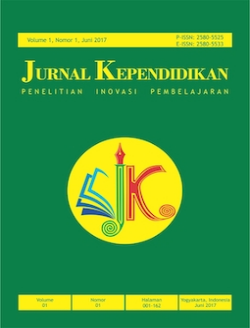ALMUSTRA: An Augmented reality application for introducing traditional musical instruments
Downloads
Downloads
Aggarwal, R., & Singhal, A. (2019). Augmented Reality and its effect on our life. 2019 9th International Conference on Cloud Computing, Data Science & Engineering (Confluence), 510–515. https://doi.org/10.1109/CONFLUENCE.2019.8776989
Arena, F., Collotta, M., Pau, G., & Termine, F. (2022). An Overview of Augmented Reality. Computers, 11(2), 28. https://doi.org/10.3390/computers11020028
Arifitama, B. (2016). Preserving Traditional Instrument Angklung Using Augmented Reality Technology. The Second International Multidisiplinary Conference, 309–315. https://jurnal.umj.ac.id/index.php/IMC/article/view/1196
Arifitama, B., & Syahputra, A. (2017). Cultural Heritage Digitalization on Traditional Sundanese Music Instrument Using Augmented Reality Markerless Marker Method. Jurnal Teknologi Dan Sistem Komputer, 5(3), 101–105. https://doi.org/10.14710/jtsiskom.5.3.2017.101-105
Binanto, Iwan. 2010. Multimedia Digital Dasar Teori dan Pengembangannya, Yogyakarta,
ANDI Publisher.
Boboc, R., Duguleană, M., Voinea, G.-D., Postelnicu, C.-C., Popovici, D.-M., & Carrozzino, M. (2019). Mobile Augmented Reality for Cultural Heritage: Following the Footsteps of Ovid among Different Locations in Europe. Sustainability, 11(4), 1167. https://doi.org/10.3390/su11041167
Boboc, R. G., Băutu, E., Gí®rbacia, F., Popovici, N., & Popovici, D. M. (2022). Augmented Reality in Cultural Heritage: An Overview of the Last Decade of Applications. Applied Sciences (Switzerland), 12(19). https://doi.org/10.3390/app12199859
Merchán, M. J., Merchán, P., & Pérez, E. (2021). Good Practices in the Use of Augmented Reality for the Dissemination of Architectural Heritage of Rural Areas. Applied Sciences, 11(5), 2055. https://doi.org/10.3390/app11052055
Murtiningsih, Darsinah, Wulandari, M. D., Minsih, & Prastiwi,Y.(2022). Analysis of android-based game learning media needs on elementary thematic learning. Jurnal Kependidikan, 6(2), 229-238, 2 doi:10.21831/jk.v6i2.49190
Okanovic, V., Ivkovic-Kihic, I., Boskovic, D., Mijatovic, B., Prazina, I., Skaljo, E., & Rizvic, S. (2022). Interaction in eXtended Reality Applications for Cultural Heritage. Applied Sciences, 12(3), 1241. https://doi.org/10.3390/app12031241
Putri, A.E., Azizah, N., & Jannah, I. (2023). Development application smartness help for the disabled blind with text and image. Jurnal Kependidikan, 7(2), 163-176. https://doi.org/10.21831/jk.v7i2.59182
Rauschnabel, P. A., Felix, R., Hinsch, C., Shahab, H., & Alt, F. (2022). What is XR? Towards a Framework for Augmented and Virtual Reality. Computers in Human Behavior, 133, 107289. https://doi.org/10.1016/j.chb.2022.107289
Salleh, S. Z., & Bushroa, A. R. (2022). Bibliometric and content analysis on publications in digitization technology implementation in cultural heritage for recent five years (2016–2021). Digital Applications in Archaeology and Cultural Heritage, 25, e00225. https://doi.org/10.1016/j.daach.2022.e00225
Susanti, B. H., Safi tri, N. D., Listanto, V., & Permatasari, A. D. (2023). Animating the excretory system: An interactive learning tool for eighth grade students. Jurnal Kependidikan, 7(2), 136-147. https://doi.org/10.21831/jk.v7i2.63066
Zhang, Y., Liu, S., Tao, L., Yu, C., Shi, Y., & Xu, Y. (2015). ChinAR: Facilitating Chinese Guqin learning through interactive projected augmentation. ACM International Conference Proceeding Series, 18-19-Apri, 23–31. https://doi.org/10.1145/2739999.2740003
Zulhaida Masmuzidin, M., Syahela Hussein, N., Amira Abd Rahman, A., & Aqqil Hasman, M. (2020). Learning the Malay Traditional Musical Instruments by using Augmented Reality Application. Journal of Engineering and Applied Sciences, 15(7), 1622–1625. https://doi.org/10.36478/jeasci.2020.1622.1625
The authors submitting a manuscript to this journal agree that, if accepted for publication, copyright publishing of the submission shall be assigned to JK. However, even though the journal asks for a copyright transfer, the authors retain (or are granted back) significant scholarly rights.
The copyright form should be signed originally and sent to the Editorial Office through email to jk@uny.ac.id
Download HERE

Jurnal Kependidikan by http://journal.uny.ac.id/index.php/jk is licensed under a Creative Commons Attribution-ShareAlike 4.0 International License.




























